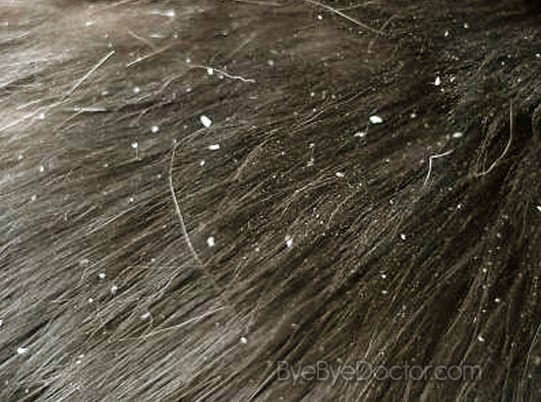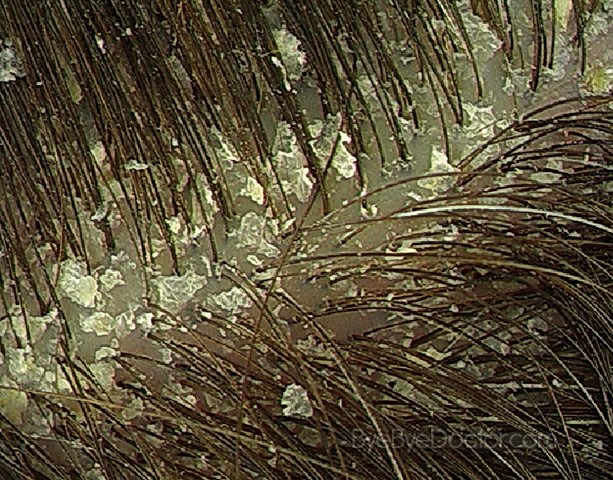Dandruff
Last reviewed by Dr.Mary on August 7th, 2018.
What is Dandruff?
This is a common prolonged condition of the scalp which is known as seborrheic dermatitis. This condition is typically marked by flaking skin on the scalp which sometimes is itching. There is inflammation of the skin which causes flaky, yellowish to white scales to form on areas of the scalp which are oily as well as the ear and it may not always have the reddening of the skin.
Although dandruff is not communicable and is rarely very serious – it often is hard to treat and also can be embarrassing. The good newsflash about dandruff is that it can be easily controlled – especially in mild cases which need only to be shampooed daily with a cleanser which is mild. Dandruff that is more stubborn will respond to shampoos which are medicated.
Dandruff Causes
Though the exact reason for dandruff to develop, is not known, many factors can contribute to playing a role in this condition to occur. Weather extremes, fatigue, infrequent skin cleaning or shampooing, using lotions with alcohol, skin problems like acne, as well as obesity seems to raise the risk.
A fungus or yeast infection called malassezia grow in the oily secretions found on the skin along with bacteria – so antifungal treatments, for instance ketoconazole or Nizoral, are sometimes effective – which does support the idea that yeast is a contributing factor. Other factors include:
- Stress
- Fatigue
- Change of season – problems seem to be worse in the winter
- Neurological conditions – seems to occur frequently in those individuals who have certain neurological problems such as Parkinson’s disease.
- HIV/AIDS – individual with HIV/AIDS have an increased risk of dandruff
- Head injury
- Stroke
Dandruff Symptoms
The general symptoms of dandruff include:
- Skin lesions
- Greasy, oily areas of skin
- Plaques over large area
- Skin scales – white and flaking or yellowish, oily and adherent
- Mild redness
- Itching – can become more itchy if infected
- Hair loss
Dandruff normally only affects the scalp but the same condition called seborrheic dermatitis can occur between folds of skin and skin which is rich with oil glands. It can also occur in or between eyebrows, on each sides of the nose, behind the ears, in the groin area, over the breastbone and often in the armpits. It can be experienced for periods when the symptoms and signs improve but then at other times it alternates with the symptoms becoming worse.
In very young babies, this condition is known as cradle cab. The patches may be yellow, thick, crusty or greasy. For infants, most cases do not itch as it does in older children or adults.
An individual needs to see a doctor if:
- Skin is painful
- Uncomfortable to the point that an individual cannot sleep or is distracted from daily routines
- Skin is painful
- Suspect the skin is infected
- Self-care steps without success
Dandruff Diagnosis
The doctor will diagnose dandruff by:
- Physical examination – talking about symptoms and examining the skin and scalp
- Skin biopsy or other tests – sometimes are necessary to confirm the diagnosis as well as ruling out other types of skin problems
Conditions which are similar to dandruff or seborrheic dermatitis include:
Atopic dermatitis
This is a chronic problem which causes itchy and inflamed skin. Often, it occurs in the folds of the elbows, on the backs of knees or on the front of the neck. Can flare up periodically and then subside for a time even up to several years.
Psoriasis
This is a skin disorder which causes red, dry skin covered with silvery scales. It can affect the scalp as well as causing flaky dandruff. Can cause patches which range from a few spots to major eruptions which cover large areas of the body.
Ringworm of the scalp
This is typical a fungal infection of the scalp seen in toddlers as well as school-age children. It causes itchy, red, bald-looking patches on the scalp.
Dandruff Home Remedies
- Hot steam bath
- Immerse peels of lemons in coconut oil for 8-10 days on the hair.
- Hot oil therapy
- Cosmetic vinegar mixed with 6 tablespoons of hot water. Dab scalp with cotton soaks with this solution.
- Mix beetroot juice with vinegar or ginger juice. Mix and apply on the scalp.
- Juice of snake gourd to rub on scalp
- Cider vinegar added to final rinsing water after shampooing
- Teaspoon of fresh lime juice in last rinse when washing hair
- Wash hair with green gram powder in curd twice a week
- Many other unique and different home remedies on the internet
Dandruff Treatment
Dandruff can be controlled – it may take some persistence as well as a little perseverance. Normally, daily shampooing with a shampoo which is gentle will reduce oiliness as well as skin cell build up.
When normal shampoos fail, try “over the counter” dandruff shampoos. Please note that all dandruff shampoos are not alike so you might need to try several to discover one that works. If itching develops, or redness, burning or stinging with any products, stop using it. If you up develop allergic reaction such as hives, rash or problems breathing, get medical attention immediately.
Dandruff Shampoo
Shampoos for dandruff are normally classified by the medication they contain:
- Zinc pyrithione shampoos such as Selsun Salon or Head & Shoulders contains zinc pyrithione which is antibacterial as well as antifungal and can reduce the fungus on the scalp that can often cause dandruff.
- Shampoos which are tar-based such as Neutrogena T/Gel. Coal tar helps disorders such as dandruff, psoriasis and seborrheic dermatitis by reducing how fast skin cells on the scalp expire and fleck off.
- Shampoos having salicylic acid such as Ionil T. These are known as “scalp scrubs” which help to eradicate scale but often can leave the scalp too dry, causing further problems.
- Shampoos with selenium sulfide such as Selsun Blue. These shampoos slow up skin cells from dying and also may reduce malassezia.
- Shampoos with ketoconazole such as Nizoral. Ketoconazole is a antifungal which is broad-spectrum can often work when additional shampoos fail.
If an individual shampoos for several week using one of the above and are still having problems with dandruff, see your doctor. You may need something stronger with requires a prescription-strength shampoo or a treatment with lotions that contain steroids.



